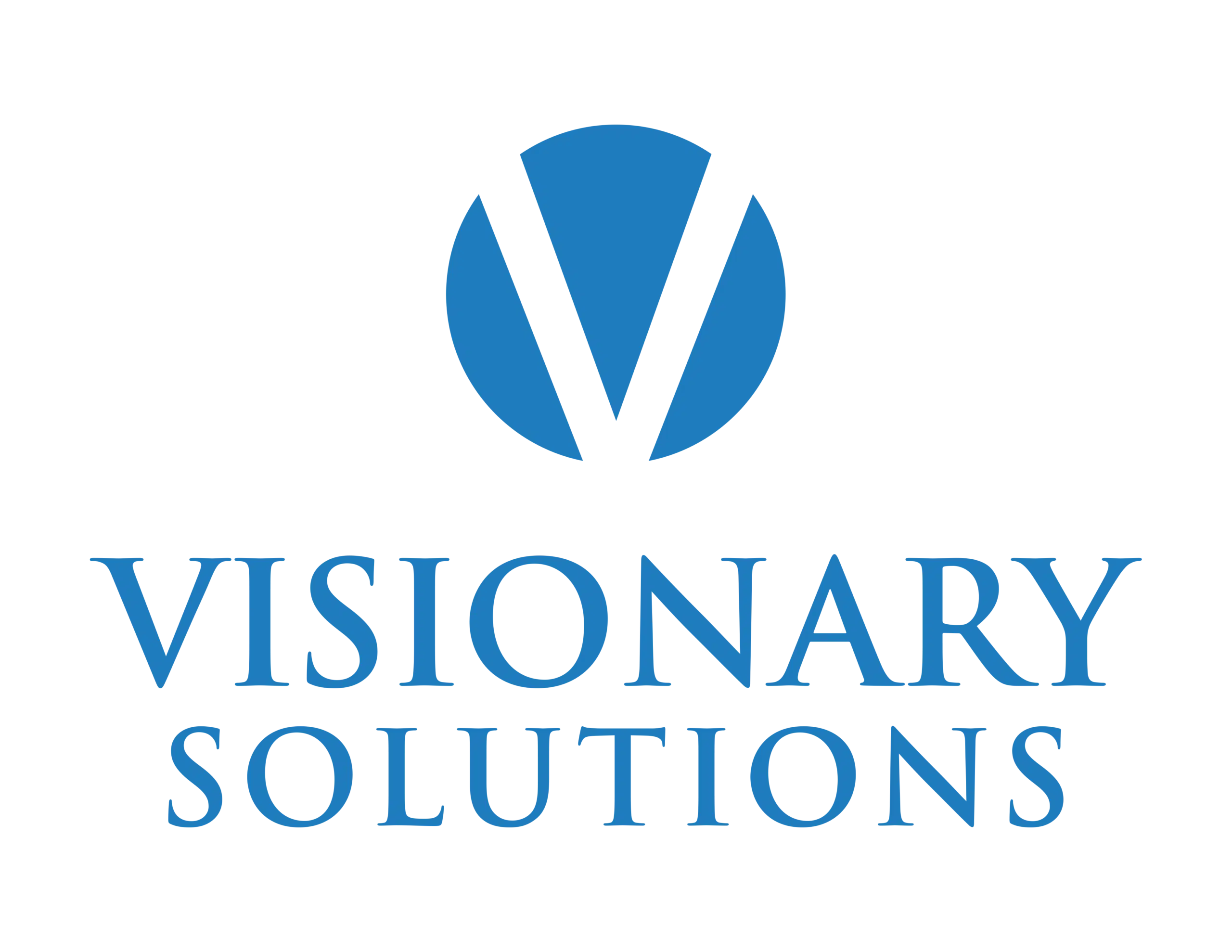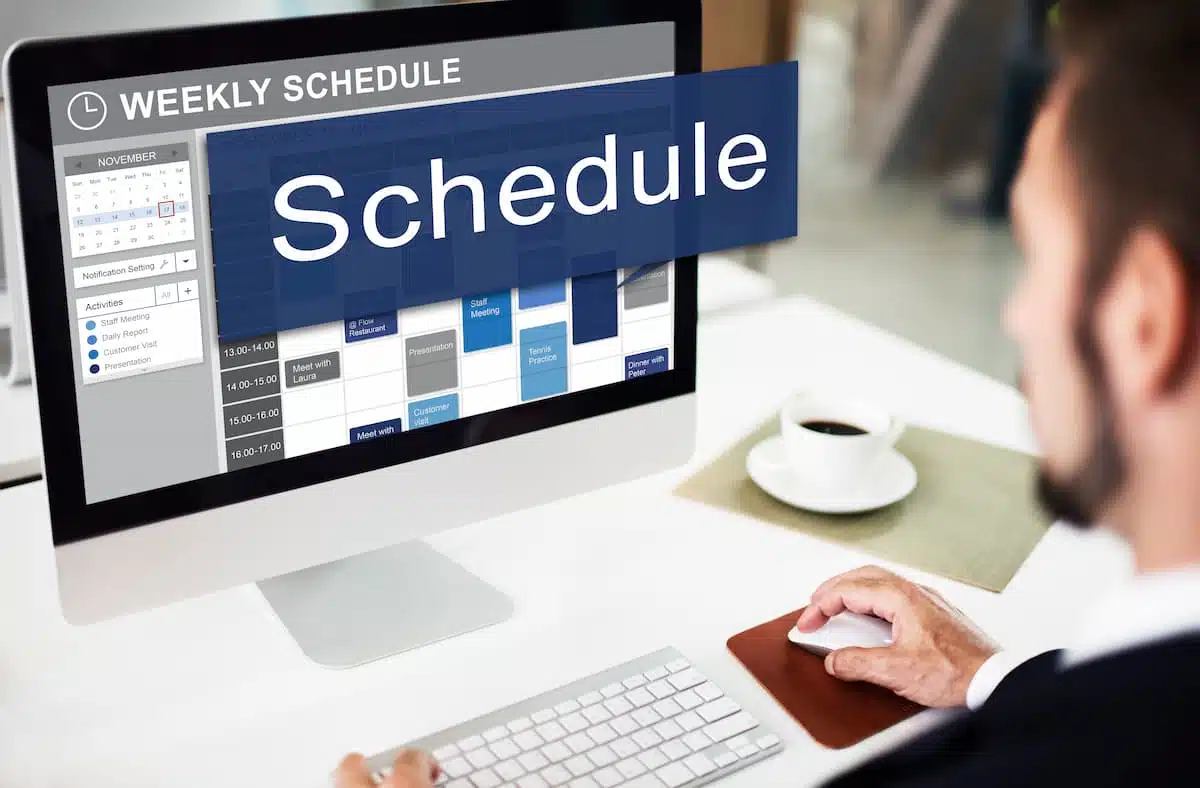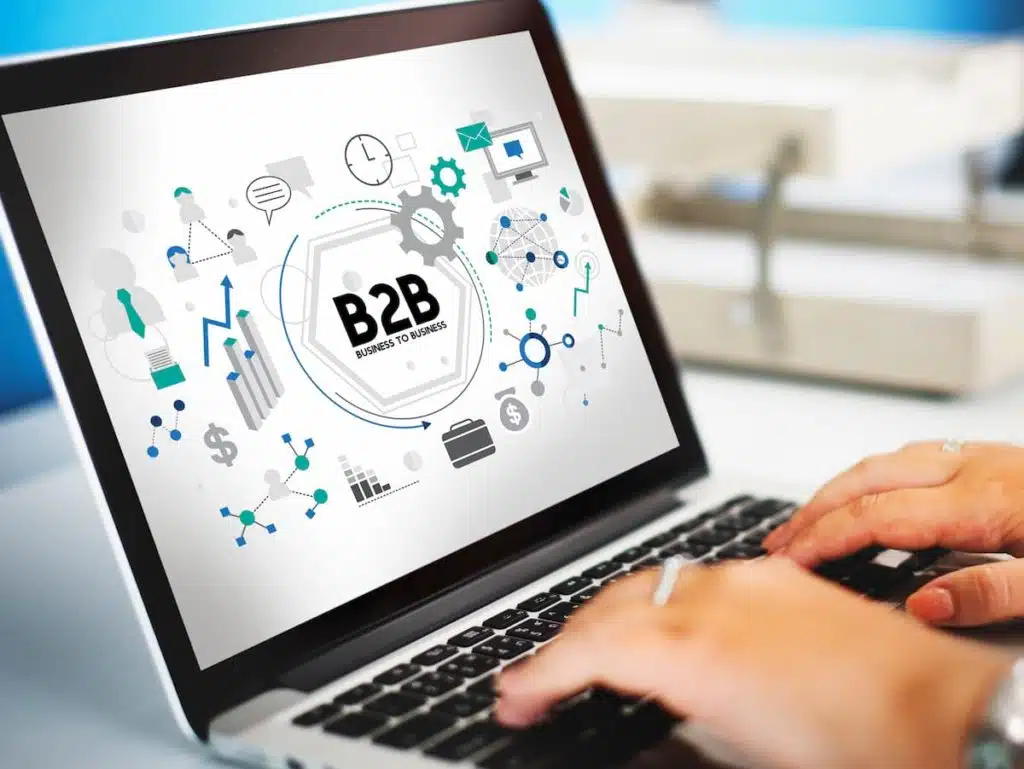In the fast-paced world of professional interactions, the art of B2B appointment setting has emerged as a critical component for success. This comprehensive guide is dedicated to unraveling its intricacies.
It’s the linchpin in establishing those crucial initial meetings that pave the way for productive collaborations and transactions.
In this guide, we delve into the world of this strategy, exploring its importance, tactics, best practices, and how it can propel your business to new heights.
So, let’s embark on this journey to master it!
What is B2B Appointment Setting?
B2B appointment setting is a strategic sales process used primarily in the business-to-business (B2B) sector.
It involves methodically and proactively scheduling appointments between sales representatives and potential clients or leads.
Its primary objective is to connect with decision-makers within other companies, initiate meaningful conversations, and ultimately secure meetings that can lead to valuable relationships, partnerships, or sales opportunities.
This approach is especially valuable in industries where personal interactions, negotiations, and tailored solutions are essential for closing deals, such as software services, financial consulting, industrial equipment, and other specialized sectors.
B2B appointment setting aims to bridge the gap between those seeking specific products or services and the professionals offering such solutions.
B2B Vs B2C Appointment Setting
While both B2B (business-to-business) and B2C (business-to-consumer) appointment setting involve scheduling interactions with potential clients, they have distinct characteristics that set them apart.
- Target Audience: In B2B appointment setting, the target audience comprises other businesses and organizations. The focus is on reaching decision-makers, often at higher management levels, who have the authority to make purchasing decisions on behalf of their companies.
B2C, on the other hand, typically targets individual consumers who make personal buying decisions.
- Complexity: B2B transactions are generally more complex and involve in-depth negotiations, customized solutions, and longer sales cycles.
In contrast, B2C transactions are often simpler and based on individual preferences or needs. - Relationship Building: B2B appointment setting emphasizes building long-term, professional relationships. It requires a deep understanding of the client’s business and its unique needs.
In B2C, relationships may be less involved, focusing more on immediate sales.
- Marketing and Messaging: B2B appointment setting often involves marketing to a niche audience with specific industry knowledge. The messaging should reflect this expertise.
B2C marketing may be more widespread and appeal to a broader consumer base. - Nuances and Challenges: B2B appointment setting faces unique challenges, such as identifying the right decision-makers, dealing with longer sales cycles, and addressing the specific needs of each business.
B2C booking may encounter different challenges related to consumer preferences, brand loyalty, and individual buying behaviors.
The Role of B2B Appointment Setting in Lead Generation
Business to business appointment setting plays a pivotal role in the lead generation process, creating a symbiotic relationship that benefits both aspects of the sales funnel.
While this may seem like a relatively simple and straightforward task, its impact on lead generation and conversion rates is profound.
It acts as the initial bridge between a business and its potential clients. It serves as a means of introduction, allowing a company to engage with prospects in a more personalized and direct manner.
Here’s how it all works together:
- Building Relationships: Appointment setting provides an opportunity to initiate and nurture relationships with potential clients.
Rather than relying solely on impersonal methods like email or cold calling, setting up appointments enables a face-to-face (or at least a voice-to-voice) interaction.
This direct engagement is invaluable in creating a sense of trust and understanding between the business and the prospect. - Qualifying Leads: Not all leads are created equal. Effective appointment setting allows for a preliminary evaluation of a lead’s potential.
During the process, key information is gathered, such as the prospect’s needs, interests, and pain points. This helps in the crucial task of lead qualification.
By understanding the prospect’s requirements and intentions, businesses can focus their efforts on leads that are more likely to convert into customers. - Higher Conversion Rates: The symbiotic relationship between appointment setting and lead generation becomes evident in the higher conversion rates it facilitates.
When a sales representative engages with a prospect during an appointment, they can tailor their pitch to address the prospect’s specific needs.
This personalization significantly increases the chances of converting the lead into a customer, as opposed to generic, one-size-fits-all sales approaches. - Efficiency: A key advantage of B2B appointment setting is that it streamlines the sales process. It ensures that sales representatives are dedicating their time and resources to leads that are more likely to result in sales.
This efficiency is not only cost-effective but also boosts the morale of the sales team by allowing them to focus on leads with a higher conversion potential. - Feedback Loop: The appointment setting process is not just a one-way street. It allows for a valuable feedback loop that informs the lead generation strategy.
Information gathered during appointments can be used to refine and optimize the lead-generation process.
Understanding what prospects are looking for and how they respond to different approaches helps in tailoring efforts for better results.
Proven Appointment Setting Techniques
In the world of B2B sales, mastering these techniques is akin to unlocking the gateway to potential business opportunities.
Whether you’re a seasoned sales professional or just starting, understanding and implementing these techniques can be a game-changer for your success.
This section delves into some of the most effective methods for appointment setting in B2B, providing general insights and highlighting their importance:
Cold Calling: The Art of the First Impression
This remains a classic and powerful technique.
It involves reaching out to potential clients or businesses who may have no prior interaction with your company. The key lies in making a compelling first impression and offering something valuable from the very start.
Consider this scenario
A representative from a software company calls a prospect and, within the first minute, demonstrates an understanding of the prospect’s industry challenges and how their software solution can address them. The prospect is intrigued and agrees to a follow-up appointment.
Email Outreach: Crafting Compelling Messages
Email outreach is another essential technique in the B2B appointment-setting toolkit.
Crafting compelling and personalized email messages can grab the attention of potential clients and entice them to engage with your offerings.
It’s all about creating a message that resonates and encourages them to schedule that initial meeting.
For example, an email sent to a manufacturing company emphasizes how your software can streamline their production processes.
This email doesn’t just sell; it addresses a specific pain point, making it more likely for the recipient to respond and schedule an appointment.
Leveraging Social Media: Building Relationships
In today’s digital age, social media is an invaluable tool.
Platforms like LinkedIn provide a space for professionals to connect, share insights, and engage with potential clients. Building relationships this way can lead to meaningful appointments.
Imagine a scenario where a financial consultant connects with a business owner on LinkedIn.
Instead of immediately pitching services, the consultant starts by commenting on the business owner’s posts, sharing valuable insights, and gradually building trust.
This approach leads to a conversation and, ultimately, an appointment.
Benefits of B2B Appointment Setting
This is a strategic process that offers a myriad of benefits for businesses seeking to foster growth, maximize their sales potential, and build robust relationships with other companies.
In this section, we will delve into its key advantages, providing insights into why it has become an indispensable tool for modern businesses:
Efficient Time Management
B2B appointment setting is a time-saving powerhouse. It allows businesses to streamline their sales processes, ensuring that sales representatives spend their time engaging with qualified leads.
Instead of chasing cold prospects, valuable hours are invested in interactions with those who have expressed genuine interest in the offered products or services.
Studies show that efficient time management is a critical aspect of B2B appointment setting. Companies that effectively manage their sales team’s time are 57% more likely to close deals.
This signifies that B2B appointment setting optimizes time resources, focusing efforts where they matter most.
Increased Sales Opportunities
By reaching out to prospects who have already displayed some level of interest, B2B appointment setting significantly amplifies sales opportunities. Every appointment set represents a potential deal in the making.
Moreover, since these appointments are often with decision-makers, the likelihood of closing deals and achieving revenue targets is notably higher.
Research suggests that following up on a web-generated lead within five minutes makes a company 9 times more likely to convert that lead into a prospect.
This ensures that follow-ups happen promptly and effectively, enhancing the conversion rate and boosting sales opportunities.
Establishment of Stronger B2B Relationships
B2B relationships are the bedrock of long-term business success.
Appointment setting allows businesses to initiate conversations with other companies on a personalized and tailored level. By understanding the specific needs and pain points of a prospect, they can offer solutions that precisely address these issues.
Additionally, this means that each interaction is a dedicated engagement with the prospect, fostering a sense of importance and respect.
This personalized approach enhances the potential for building stronger B2B relationships, based on trust and understanding.
Research indicates that B2B relationships characterized by trust lead to greater collaboration and are more likely to achieve joint goals.
Through it, businesses can lay the foundation for such relationships, ultimately leading to more fruitful and mutually beneficial partnerships.
Modern Tools for B2B Appointment Setting
In the ever-evolving landscape of B2B sales and marketing, the use of modern tools and technology has become paramount to success in appointment setting.
These tools not only streamline the process but also enhance efficiency, ultimately leading to more consistent and fruitful outcomes.
1. Customer Relationship Management (CRM) Software
CRM software is the cornerstone of B2B appointment setting.
It helps businesses manage their interactions with prospective clients, allowing them to keep detailed records of leads and track communication history.
By utilizing CRM tools, companies can schedule follow-ups and ensure that no promising prospect falls through the cracks.
Their advantages are numerous, including improved organization, more targeted lead nurturing, and the ability to segment contacts based on specific criteria, which in turn allows for more personalized and effective outreach.
2. Email Marketing Platforms
These enable businesses to create and send personalized email campaigns, schedule emails at optimal times, and track open rates and responses.
Automation within email marketing platforms can be employed to send follow-up emails based on recipient actions or lack thereof.
This capability ensures that you stay top-of-mind with your leads and increases the chances of securing appointments.
3. Marketing Automation Software
Automation platforms like HubSpot and Marketo allow businesses to streamline their marketing and lead nurturing efforts.
These offer features such as lead scoring, which identifies the most engaged and promising leads, and lead nurturing workflows, which can send automated, targeted content to targets at various stages of the sales funnel.
This not only saves time but also ensures that the right message is delivered to the right prospects at the right time, increasing the likelihood of setting appointments with highly qualified leads.
4. Appointment Scheduling Software
Appointment scheduling software, like Calendly or Acuity Scheduling, simplifies the process of booking.
These tools allow potential clients to view your availability and choose a time that suits them, reducing the back-and-forth communication often associated with this strategy.
Such software can seamlessly integrate with your CRM and email marketing platforms, making it easy to track and follow up on scheduled appointments.
5. Predictive Analytics and Artificial Intelligence
In recent years, predictive analytics and artificial intelligence (AI) have gained prominence in B2B appointment setting services.
By analyzing vast datasets, AI can identify patterns and trends, helping sales teams prioritize leads that are more likely to convert into appointments.
Additionally, AI-driven chatbots can engage website visitors, answer their questions, and book slots directly.
This technology is not only efficient but also provides a personalized experience for potential clients.
Proven Strategies for Effective B2B Appointment Setting
This strategy requires a special approach that goes beyond mere cold calling or sending generic emails.
To excel in this domain, professionals must adopt proven tactics that ensure the highest chances of success.
In this section, we’ll delve into the key methods and best practices for B2B appointment setting.
- Qualifying Leads
One of the foundational principles of effective outbound appointment setting is lead qualification.
Not all leads are created equal, and it’s crucial to identify and focus on those with a genuine interest in your product or service. This involves analyzing factors such as the lead’s demographics, firmographics, behavior, and intent.
It’s not about the quantity you generate but the quality of those leads.
By doing so, you can ensure that you’re investing your time and resources in those who are more likely to convert into clients. This not only boosts your conversion rates but also optimizes your team’s productivity.
The more refined your lead qualification process, the more efficient your appointment-setting efforts will become.
- Personalization is Key
In the age of information overload, generic, one-size-fits-all approaches no longer cut it. To stand out and make a lasting impression, personalization is the key.
When reaching out to potential clients, take the time to research and understand their specific needs and pain points.
Craft your messaging to directly address these concerns and offer solutions tailored to their situation.
Personalization isn’t just about using a prospect’s name in your email; it’s about showing that you’ve done your homework and are genuinely interested in helping them.
By making your outreach more relevant and individualized, you’re more likely to capture the prospect’s attention and earn their trust.
- Continuous Training and Adaptation
The B2B landscape is constantly evolving, and what works today may not work tomorrow. Therefore, continuous training and adaptation are essential for your success.
Your team must stay updated on the latest industry trends, sales techniques, and technology tools.
Moreover, as client needs and market conditions change, your approach should evolve accordingly.
Be ready to adapt your messaging, value proposition, and even the channels you use to connect with prospects. This flexibility and willingness to change will keep your B2B appointment-setting strategies effective in dynamic markets.
Training should focus not only on traditional sales skills but also on leveraging technology effectively.
Automation tools, customer relationship management systems (CRMs), and data analytics can enhance the efficiency and effectiveness of your B2B efforts.
Outsourcing Appointment Setting Process: Pros and Cons
In the realm of B2B sales, the process of appointment setting is critical for securing valuable business opportunities.
As businesses aim to expand and reach new clients, many grapple with the decision of whether to manage it in-house or outsource it to specialized appointment setters.
This section explores the reasons why some opt to externalize this process and the advantages and potential challenges associated with this choice.
Advantages of Outsourcing Appointment Setting
- Cost-Efficiency: Outsourcing appointment setting can lead to cost savings.
External service providers often operate on a pay-per-lead or pay-per-appointment model, meaning that businesses only pay for the tangible results they receive.
This eliminates the need for hiring and training in-house staff, which can be more expensive in the long run. - Expertise: Professional companies specialize in this task. They have the knowledge and experience to identify and engage with the right decision-makers at target businesses.
This can significantly boost the chances of securing valuable appointments. - Scalability: Outsourcing allows businesses to scale their appointment-setting efforts up or down as needed.
During high-demand periods, such as product launches or marketing campaigns, more resources can be allocated. Conversely, during quieter times, costs can be minimized. - Time Savings: Delegating appointment setting to experts frees up internal teams to focus on core sales activities. This results in increased productivity and efficiency.
Sales representatives can concentrate on closing deals rather than hunting for leads. - Technology and Tools: Outsourcing providers often have access to cutting-edge tools and technologies that streamline the entire process.
This includes customer relationship management (CRM) systems, predictive dialers, and data analytics software, enhancing the overall efficiency of the operation.
Challenges of Outsourcing Appointment Setting and Solutions
- Loss of Control: To mitigate this challenge, it’s essential to maintain clear communication with the outsourcing provider.
Establish detailed guidelines and protocols for the appointment-setting process. Regularly review and refine the scripts and approaches used to ensure they align with your brand and values. - Quality and Relevance of Appointments: There’s a risk that outsourced providers may generate low-quality leads or appointments that don’t align with your ideal client profile.
Address this by working closely with the partner to define your target audience and provide comprehensive details about your offerings.
Regularly review the quality of appointments and provide feedback for improvement. - Data Security and Privacy: Sharing sensitive customer information with a third party can raise data security and privacy concerns.
Ensure the provider has robust data security measures in place. This includes encryption, access controls, and compliance with data protection regulations like GDPR.
Airtight confidentiality agreements are also essential. - Cultural Fit and Understanding: If the outsourcing provider is located in a different region or operates in a different cultural context, there might be a risk of miscommunication or misunderstanding.
Bridge this gap by maintaining open and transparent communication. Regular meetings and training sessions can help align the external team with your business’s culture and expectations. - Cost Overruns: While outsourcing can be cost-efficient, it’s essential to manage costs effectively.
Set a clear budget and monitor expenses regularly. Ensure that the partner provides detailed reports on the costs associated with appointment setting.
Consider renegotiating terms if costs start to exceed your budget.
Conclusion
In conclusion, this comprehensive guide has shed light on the intricacies of B2B appointment setting, offering valuable insights and strategies for businesses to succeed in this critical endeavor.
We began by defining the B2B appointment setting and exploring its significance in modern business landscapes. Then, we delved into the key components of a successful strategy, such as identifying target prospects, crafting compelling messaging, and using the right communication channels.
Throughout the article, we emphasized the importance of personalized approaches and the need to prioritize lead qualification to maximize the efficiency of appointment setting.
We also covered the critical role of technology in automating and streamlining the process.
As we wrap up, we encourage businesses, both established and those just starting, to reevaluate or establish their B2B appointment-setting strategies.
The potential return on investment (ROI) in terms of increased sales, business growth, and strengthened client relationships cannot be understated.
By applying the knowledge and strategies outlined above, you can embark on a path to more productivity and success, ultimately driving your bottom-line results to new heights.




